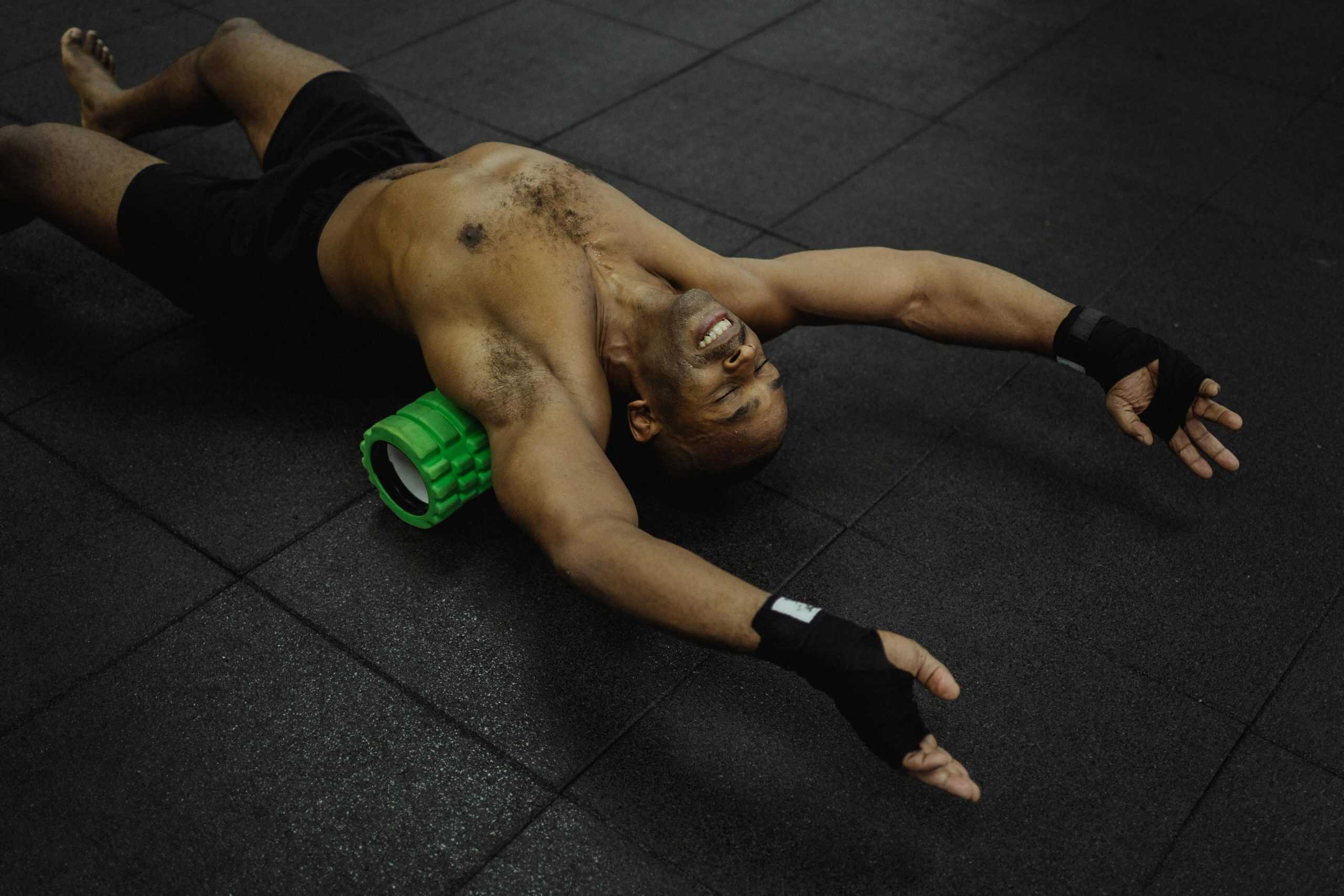The Complete Guide to Foam Rolling: Benefits, Techniques, and Mistakes to Avoid
Let’s be honest: foam rolling can kind of look ridiculous, can’t it? You’re essentially rolling around on the floor like you’re trying to work out a kink in your yoga mat, except the yoga mat is your leg, and it hurts…a lot! But here’s the thing: this weird torture device disguised as fitness equipment actually works, and once you get the hang of it, you’ll wonder how you ever survived leg day, or any day, honestly, without one. Let’s dig into why!
What Is Foam Rolling?
Foam rolling is a form of self-myofascial release, which is just a fancy way of saying you’re giving yourself a deep tissue massage with a cylindrical piece of foam. You can think of it as DIY physical therapy, minus the copay and awkward small talk (seriously, I hate small talk).
When you roll over tight muscles and fascia, which is the connective tissue wrapping around your muscles, you’re applying pressure to release tension and improve blood flow. It’s like ironing out the wrinkles in your muscles, except these wrinkles will fight back. Now, what once was just a focus for elite athletes and physical therapy clinics is now standard equipment in every gym and many living rooms across America.
The Science-Backed Benefits of Foam Rolling
Reduces Muscle Soreness and Speeds Recovery
That delicious agony you feel two days after squats? That’s delayed onset muscle soreness (DOMS), and foam rolling can help dial it down. Studies show that post-workout foam rolling can reduce muscle soreness by up to 6% and help you bounce back faster between training sessions. While 6% might not sound like much, when you’re struggling to walk down stairs after leg day, every little bit counts!
Improves Flexibility and Range of Motion
Foam rolling can temporarily increase your range of motion without compromising strength or performance. Just 30-60 seconds of rolling can begin to improve joint mobility, making it an excellent addition to your warm-up routine!
Calms Your Nervous System
Foam rolling isn’t just about the physical pressure, either! When you apply sustained pressure to tight spots, your nervous system responds by releasing tension through a process called neural inhibition, which is basically your brain telling your muscles to chill out a little! The slow, deliberate foam rolling can activate your parasympathetic nervous system, helping lower your heart rate and promote relaxation!
Proper Foam Rolling Techniques for Key Muscle Groups
Proper form matters just as much here as it does with any other exercise.

Calves
The calves are a great starting point because they’re typically less sensitive than the other areas. Start by sitting on the floor with your legs extended and place the roller under one calf. Use your hands for support and slowly roll from your ankle to just below your knee.
Quadriceps
Here, you’re going to lie face down with the roller under your thighs, and you can support yourself on your forearms and slowly roll from just above your knees to just below your hips. Not going to lie, this one is more than likely going to hurt, as your quads are typically the tightest muscle group for most people. So, take your time and breathe through it!
Hamstrings
Sit with the roller under your hamstrings, with your hands supporting you from behind. Roll from just above your knees to just below your glutes. You can also do both legs simultaneously or focus on one at a time for more targeted pressure; the choice is yours.
Upper Back
Position the roller across your upper back, just below your shoulder blades. Support your head with your hands and slowly roll up and down your upper back, and be sure to avoid your lower spine; stick to the muscular areas only.
Common Foam Rolling Mistakes
Rolling Too Fast
Rolling quickly might feel like you’re being more efficient, but you’re actually defeating the purpose. You can think of it like kneading dough; you can’t rush the process. Fascia needs time to respond to pressure, so be sure to slow down, maybe focus on one inch per second.
Applying Excessive Pressure
Just because foam rolling hurts doesn’t mean more pain equals better results. Some people attack their foam roller like they’re trying to punish their muscles for yesterday’s workout, when in fact, too much pressure can cause bruising and actually increase muscle tension.
Staying on One Spot Too Long
Found a particularly gnarly knot? Well, you’re going to need to resist the urge to camp out on it for five minutes. Prolonged pressure on one spot can irritate nerves and damage tissue, and can potentially cause bruising, too. Instead, limit your focus pressure to about 20-30 seconds per spot. You can always circle back to a tight area later in the day or your next session.
Rolling Over Bones and Joints
Remember, your foam roller is meant for soft tissue, not your skeleton! This means that rolling directly over bones, joints, or your lower back can be painful and potentially harmful!
When to Foam Roll and When to Skip It
Timing matters with foam rolling.
Best Times to Foam Roll
- Before workouts, as part of your warm-up
- After training during your cool-down
- On rest days for active recovery
- When you’re feeling particularly stiff or tight
When to Avoid Foam Rolling
- Open wounds or skin conditions
- Acute injuries or inflammation
- Blood clotting disorders
- Osteoporosis or other bone conditions
- Recent surgery
If you’re dealing with any medical conditions, it is vital that you check with a healthcare provider before adding foam rolling to your routine!
Final Thoughts on Foam Rolling
Foam rolling isn’t magic (although, how nice would that be?!), and it won’t transform you overnight. But it is a legitimate tool that can help reduce muscle soreness, improve flexibility, and support recovery when used correctly! The key is consistency and proper technique. Start slow, focus on the major muscle groups, and remember that some slight discomfort might be normal, but sharp pain is not. So, whether you’re a weekend warrior trying to survive Monday morning or a serious athlete looking to optimize recovery, foam rolling deserves a spot in your routine!
This article is for informational purposes only and is not intended as medical advice. Foam rolling may not be suitable for everyone. Always consult with your doctor or a qualified healthcare professional before beginning any new exercise, recovery, or self-care routine, especially if you have an existing injury, medical condition, or concerns about your health.







